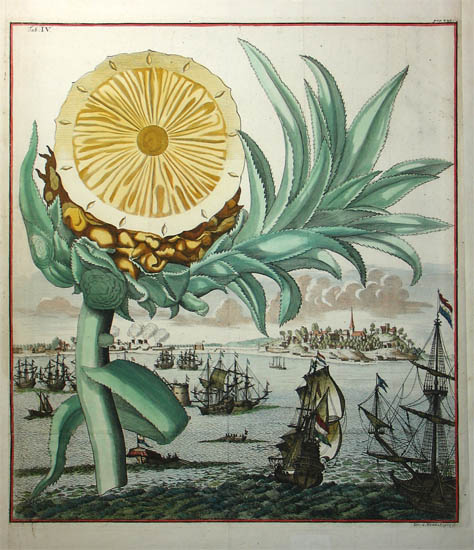



That's why you often see pineapple carvings inside and outside of historic buildings such as inns or colonial-era homes in the U.S. and Europe. One of the more over-the-top examples of pineapple architecture is the Dunmore House, a folly in Dunmore Park, Scotland that has a roof shaped like a pineapple.
:max_bytes(150000):strip_icc()/__opt__aboutcom__coeus__resources__content_migration__mnn__images__2017__11__charleston-pineapple-0315ebfc299a4c3ab8977c45a38119d8.jpg)
Stateside, a pineapple fountain sits in a prominent location in the Charleston, South Carolina waterfront area. Most places are much more subtle: pineapple carvings topping gateposts, at the bottom of stairway railings or above doorways.
The Pineapple, once a shameless emblem of financial and social inequality between the classes in Europe at the height of the tropical fruit’s obsession, was coopted by America and now serves as a symbol of hospitality, welcoming, and caring.
Winter storm Uri (kind of like our own Pineapple Express) was hard for all of us, but for the homeless and children with food scarcity, it was life-threatening.
Our best-selling relaxed fit Stevie T-Shirt is now available in a Pineapple embellished version to support two worthy organizations, SEARCH Homeless Services, and Kids' Meals Inc.
Now this is a T-Shirt that can change the world! Our NEW Peachy Pineapple Stevie T-Shirt is helping to fed the hungry when you purchase one.
What better symbol to celebrate giving to those who are most vulnerable and were impacted by the devastating winter storm that hit Texas?! 25% of profits will be donated to help SEARCH and Kids' Meals in their efforts.



















Leave a comment (all fields required)